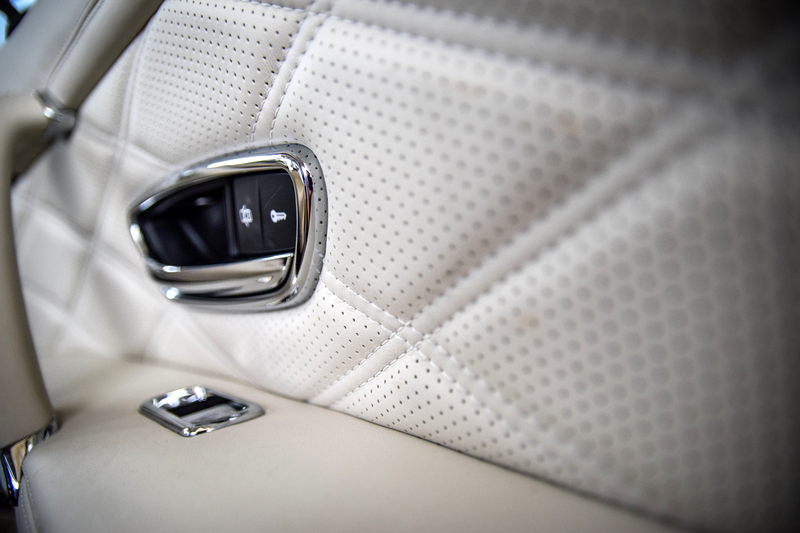Grease Detachment: Efficient Methods for Enamel Oven Tray Shine
Posted on 26/05/2025
Grease Detachment: Efficient Methods for Enamel Oven Tray Shine
Keeping your kitchen spotless often comes down to handling one of the most persistent challenges: grease detachment. Enamel oven trays, praised for their durability and smooth finishes, are magnets for baked-on food and stubborn grease. Achieving that perfect, shiny tray can seem impossible without the right techniques. In this comprehensive article, we'll explore the most effective, expert-approved ways to achieve grease-free brilliance on your enamel oven trays.

Understanding Grease Build-Up on Enamel Oven Trays
Enamel oven trays are valued for their non-reactive nature and sleek appearance, but intense heat and frequent use can leave unsightly, sticky grease residues. Not only are these marks unattractive, but they can also affect the flavor of your meals and shorten your tray's lifespan. Proper grease removal is essential for health, hygiene, and optimal cooking performance.
Why is Grease So Hard to Remove?
- Heat Transformation: High temperatures cause fats and oils to oxidize and polymerize, forming stubborn layers on enamel surfaces.
- Porous Residue: While enamel itself isn't porous, burnt residues can become embedded in surface imperfections, making cleaning difficult.
- Repeated Buildup: Each use without a thorough clean allows grease to harden further, compounding the challenge.
Preparation: Ensuring Safe and Effective Cleaning
Before starting the grease detachment process, gather your materials:
- Rubber gloves
- Non-abrasive sponges or cloths
- Baking soda
- White vinegar
- Dishwashing liquid
- Plastic or silicone scraper
- Old toothbrush
- Optional: Oven-safe cleaning agents, lemon juice, hydrogen peroxide
Put on your gloves for safety, ensure the enamel tray is cool, and remove any loose debris to facilitate the most efficient degreasing methods.
Efficient Grease Removal Methods for Shiny Enamel Trays
Here, we outline proven techniques for removing stubborn grease, using a combination of natural options and commercial products for oven tray cleaning and grease detachment.
1. The Baking Soda & Vinegar Method
*Baking soda* is a well-known mild abrasive and deodorizer. When combined with white vinegar, chemical reactions help lift baked-on grease without damaging the enamel.
- Sprinkle a generous layer of baking soda over the greasy areas of your enamel tray.
- Pour white vinegar (preferably warm) slowly over the baking soda. It will fizz on contact, loosening grime.
- Let the mixture sit for 15-30 minutes for the best effect.
- Use a non-abrasive sponge to gently scrub the surface, focusing on corners and edges where grease accumulates.
- Rinse thoroughly with warm water, and repeat if necessary.
Tips: For maximum efficiency, use hot water during rinsing, as heat helps dissolve lingering fats.
2. Soaking Method for Deep Grease Detachment
This time-tested technique takes advantage of extended soaking to loosen caked-on grease, making final removal a breeze.
- Fill your sink or bathtub with very hot water and a squirt of good-quality dishwashing liquid.
- Submerge the tray fully and let it soak for at least an hour, or even overnight for heavy stains.
- Use a silicone or plastic spatula to gently scrape off loosened grease.
- Finish by wiping with a soft cloth and rinsing under hot water.
This method preserves the enamel while delivering impressive degreasing results, especially for enamel oven trays with accumulated residues.
3. Lemon Power: Natural Acid for Enamel Shine
Lemon juice is a powerful degreaser, owing to its natural acidity. Its pleasant scent is an added bonus.
- Cut a lemon in half and rub it directly on stubborn greasy areas.
- Squeeze juice onto the tray, focusing on particularly grimy spots.
- Let the acid work for 5-10 minutes.
- Scrub with a non-abrasive sponge, then rinse well with warm water.
This method is gentle but effective, boosting shine and reducing lingering odors.
4. Commercial Cleaning Products: When Natural Isn't Enough
Sometimes, commercial grease detachments products are needed for severe accumulations. Choose oven cleaners labeled safe for enamel:
- Always read the label for compatibility and safety instructions.
- Use in a well-ventilated area.
- Apply as directed, usually allowing the product several minutes to work before wiping away residue.
- Rinse several times to remove all chemical traces.
Note: Avoid harsh abrasives (like steel wool) and non-enamel-safe cleaners to preserve your tray's finish.
5. Hydrogen Peroxide & Baking Soda Paste
A paste made from these ingredients provides deep cleaning for persistent stains.
- Mix baking soda with a small amount of hydrogen peroxide to form a thick paste.
- Spread it over greasy spots and let it sit for 30 minutes.
- Scrub lightly and rinse thoroughly.
This method is particularly effective for trays with baked-on, blackened residue that resists typical washing.
Techniques for Long-Term Grease Detachment and Maintenance
1. Routine Cleaning After Each Use
- Wipe your enamel tray while it's still warm (never hot), using a dishcloth and mild detergent.
- Prevent build-up by removing minor spills immediately instead of letting them harden.
2. Avoiding Common Cleaning Mistakes
- Never use metal scouring pads on enamel, as they can scratch and dull the surface.
- Don't leave food residues to dry for extended periods. Hardened grease is much harder to remove.
- Steer clear of bleach or caustic soda which can stain or corrode enamel finishes.
3. Protective Measures for Grease Control
- Line your tray with parchment paper or a silicone baking mat for easy grease removal after cooking.
- Apply a light mist of oil before baking to keep sticky food from adhering directly to the surface.
- Regularly inspect and clean tray edges and corners, where grease tends to accumulate unnoticed.
Frequently Asked Questions about Grease Detachment on Enamel Trays
How often should I clean my enamel oven tray for maximum shine?
Each use! Quick clean-ups after baking prevent grease buildup, prolonging your tray's life and maintaining that coveted shine.
Are dishwasher cycles effective for grease removal?
Dishwashers can help with light grease, but stubborn baked-on residues often require pre-soaking or manual scrubbing. Always check that your enamel tray is dishwasher-safe before placing it inside.
Can I use abrasive powders or steel wool for cleaning?
Is it safe to use oven cleaners on enamel trays?
Some oven cleaners are safe, but always read labels and test on a small area first. Rinse thoroughly to remove all residue and avoid prolonged contact with harsh chemicals to preserve enamel integrity.
What if grease remains after multiple attempts?
Repeat the selected method, or combine approaches (such as vinegar and baking soda followed by a soak). Persistent, burnt-in stains may require several treatments or consideration of a specialized commercial cleaner.
Comparison Table: Top Grease Detachment Methods for Enamel Oven Trays
| Method | Effectiveness | Enamel Safety | Eco-friendliness | Ease of Use |
|---|---|---|---|---|
| Baking Soda & Vinegar | High | Excellent | Excellent | Very Easy |
| Soaking with Dish Soap | Medium-High | Excellent | Good | Simple, but time-consuming |
| Lemon Juice | Medium | Excellent | Excellent | Easy |
| Commercial Oven Cleaner | Very High | Variable | Depends on product | Easy, requires precautions |
| Hydrogen Peroxide & Baking Soda | High | Excellent | Good | Moderate |
Environmental Considerations and Safe Practices
Reducing chemical exposure benefits both your health and the environment. Natural degreasers such as vinegar, baking soda, and lemon juice break down fats without harming the planet. Proper disposal of cleaning solutions, especially if using commercial degreasers, is important to avoid contaminating water supplies.
- Use reusable cloths or sponges rather than disposable wipes.
- Opt for biodegradable, phosphate-free dish soaps.
- Compost lemon halves and baking soda residues where possible.

Expert Tips for Achieving That 'Like-New' Oven Tray Shine
- Always dry trays immediately after washing to prevent mineral spots and maintain a glossy finish.
- Perform a monthly deep clean even if your tray looks clean -- this prevents grease accumulation in invisible layers.
- Rotate use between multiple trays so each one has time to dry and be thoroughly cleaned, ensuring longevity and continuous shine.
- Store trays vertically or with a layer of paper towel to prevent contact scratching.
Summary: Your Path to Streak-Free, Grease-Resistant Enamel Oven Trays
The art of grease detachment combines immediate action with consistent cleaning and preventive measures. Whether using natural solutions like baking soda and lemon or safe commercial cleaners, the secret lies in gentle persistence. Regular care not only keeps your enamel oven tray gleaming but also safeguards your health and enhances your cooking results.
Shine is possible: With the right methods and a little effort, your oven trays can stay as bright as the day you got them!
Related Articles:
- How to Clean Other Enamel Kitchenware
- Eco-Friendly Cleaning Agents You Can Make at Home
- Maintaining Your Oven: Tips for Prolonged Appliance Life
Remember: Consistency is key. With these efficient methods for grease detachment, your enamel oven trays will continue to shine -- meal after meal.




